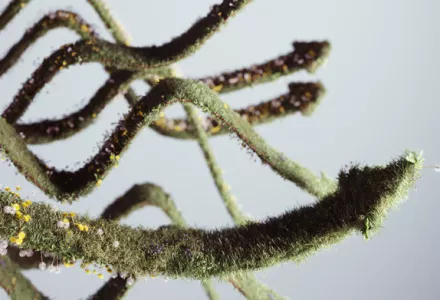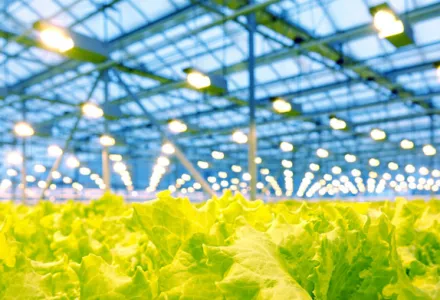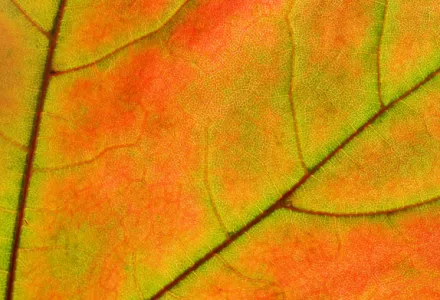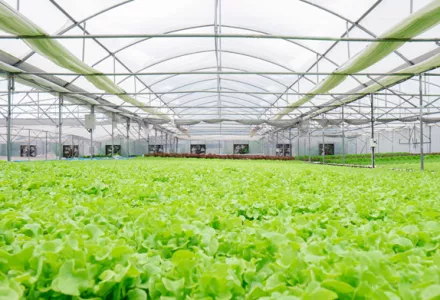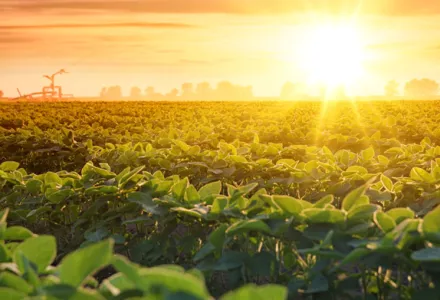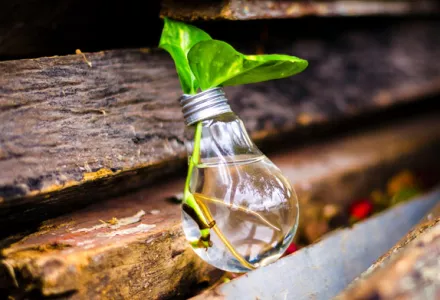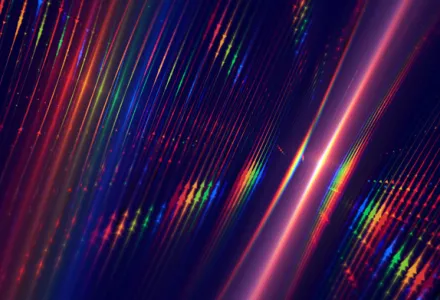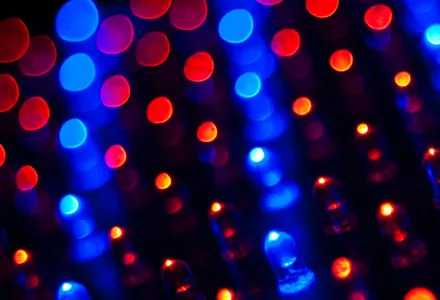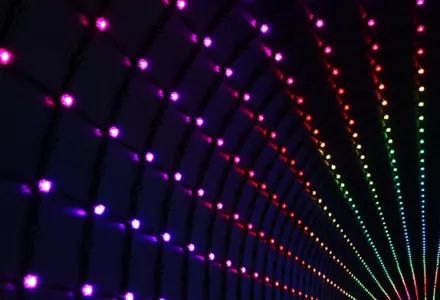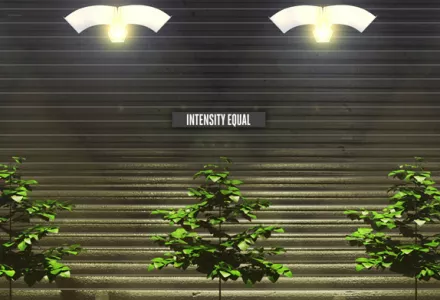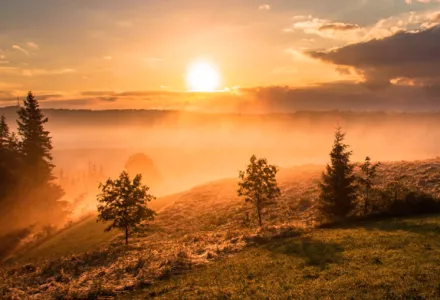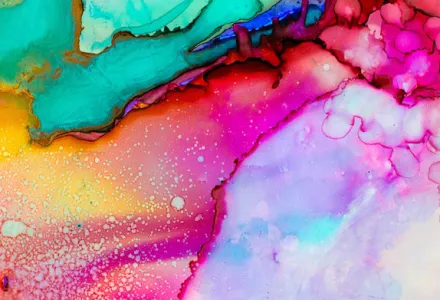While shifting from traditional HPS lights to LEDs requires some grower adjustments and changes in expectations, CANNA has found that a principled horticultural approach and well-balanced nutrient solution are all you really need to succeed.
Advantages of LEDs
LEDs have a solid presence in the horticultural market and for good reason, considering their energy savings benefits and high light intensity output. LEDs offer full spectrum lighting and also narrow spectrum lighting. They produce less infrared light, which is felt as heat, as compared to traditional HID (high intensity discharge) lamps.
LEDs favor the blue spectrum and have less far red light, which causes plants to grow shorter in stature with denser flower stacking and an overall compact shape. The blue light and UVA wavelengths from LEDs can also help increase flower quality and CANNA’s own research studies showed that plants grown under LEDs had a 1.5-3% increase in THC compared to those grown under high pressure sodium (HPS) lamps, which is consistent with additional research results (Magagnini et al., 2018; Jenkins and Livesay, 2021).
CANNA’s research also showed that even though plants tended to be ~15% shorter, their harvest yields were almost 15-50% greater when grown under LEDs at a higher light intensity compared to HPS lamps. In spite of these yield and quality differences, nutrient uptake was not statistically different, supporting the idea that a well-balanced nutrient blend is all that is needed for plants grown under LEDs and no special nutrient formulation is required apart from the growing medium specific formulation.
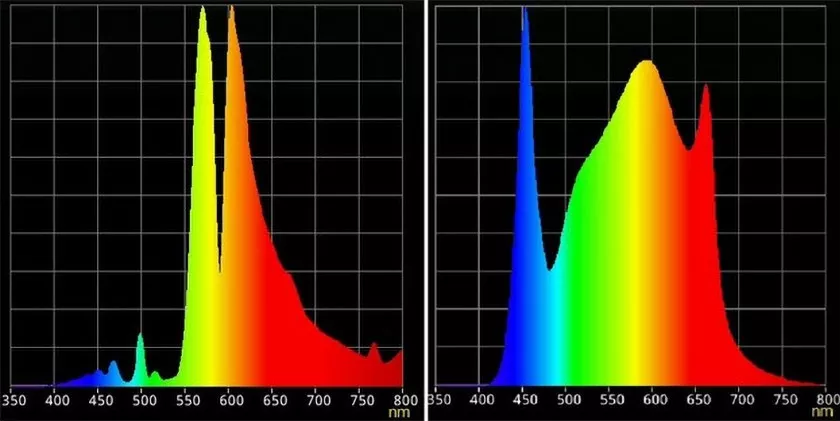
Source: www.mmjdaily.com/article/9629652/research-led-increases-thc-at-lower-energy-consumption/
Heat adjustments
Growers need to take into consideration the lower heat radiation output from LEDs and, if needed, provide supplemental (convective) heat to bring the grow environment to ~75°F. Alternatively, irrigation regimes could be adjusted to compensate for the cooler temps. Under lower temperatures, the plant is transpiring less and therefore “drinking” less nutrient solution, so a higher nutrition concentration/EC can provide more pack within each punch drink that the plant consumes and ensures it is still sufficiently fertilized. In this scenario, the grower can try to increase their EC if their plants show signs of weakness/deficiency.
As another approach, some growers have turned to an LED-specific or calcium heavy nutrient when growing under LEDs. Part of the reasoning for this is since calcium is a relatively immobile nutrient, and the plant is transpiring less, it is transporting less nutrients throughout the entire plant and more calcium needs to be applied in order to ensure sufficient nutrition. However, if the calcium load within a nutrient solution becomes too high, it can outcompete for uptake and lead to a deficiency of other nutrients. For this reason, a more resilient solution is to simply bump up the rate of a balanced, complete base fertilizer, as CANNA provides, and avoid purchasing another bottle that is ‘LED specific.’
Light Intensity
The high light intensity offered by LEDs provides growers with an opportunity to push their plants’ metabolism and overall production. Plants each have a light saturation point, which determines their threshold level above which greater intensity does not bring greater reward. A plant’s light saturation point depends on its developmental stage, species, and management techniques. However, when supplemental carbon dioxide (CO2) is supplied to plants, it increases the light intensity required by plants to reach their light saturation point, thus increasing the rate of photosynthesis.
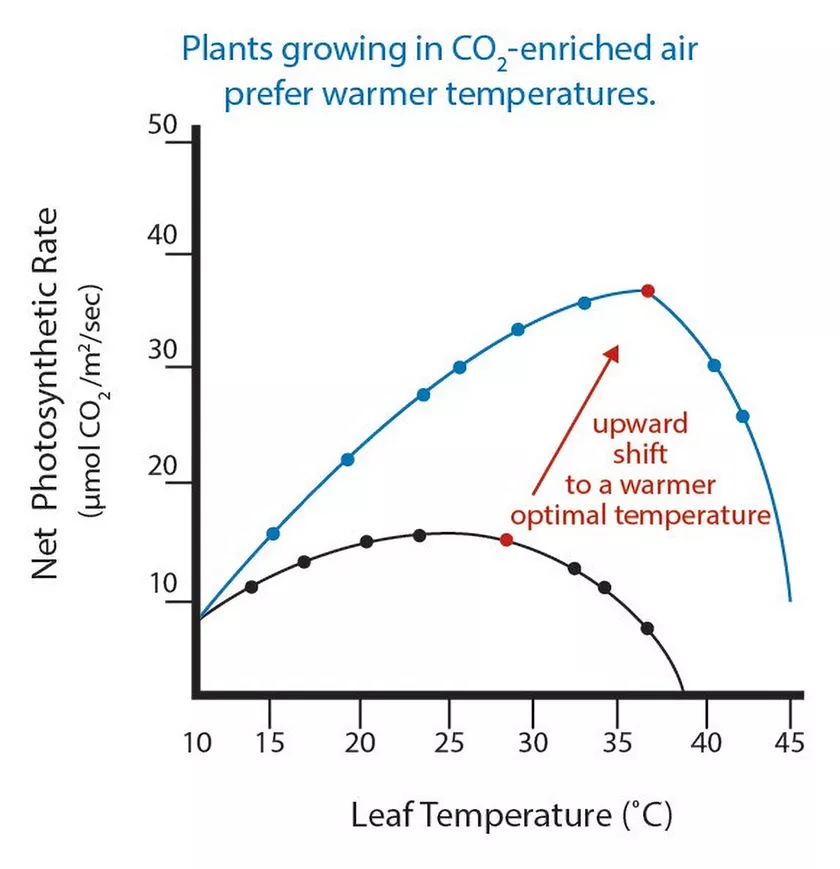
Furthermore, when CO2 is supplemented alongside an increase to the grow temperature, this increases the plant’s photosynthetic rate as well. The CO2, light intensity, temperature trifecta works in concert to support a faster metabolism and improve plant gains. And of course, this increased production will require greater nutrition. So, again, in this scenario of LEDs + supplemental CO2 + warmer temps, a slight increase in the base fertilizer rate would be helpful.
Keep it simple, you already have what you need
Whether growing under HID lamps or LEDs, stick to the basic guidelines of striving for ideal temperature and humidity based on plant production stage, closely observe the plants, and adjust feed rates based on your conditions and observations. A well-balanced fertilizer continues to be the ideal choice for the plant while growing under LEDs, just as it is when growing under HPS. That means one less bottle that you need to change from your lineup of inputs and one less aspect of your grow that you need to deliberate over. Keep it simple, stay with high quality balanced inputs, and enjoy your grow!
References
- Jenkins MW, Livesay 2021. Photosynthetic performance and potency of Cannabis sativa L. grown under LED and HPS illumination. Agric. Sci. 12: 293-304.
- Magagnini G, Grassi G, Kotiranta S 2018. The effect of light spectrum on the morphology and cannabinoid content of Cannabis sativa L. Med Cannabis Cannabinoids 2018;1:19-27.
- Poudel M, Dunn B. 2017. Greenhouse carbon dioxide supplementation. Oklahoma Cooperative Extension Service. HLA-6723.
- www.mmjdaily.com/article/9629652/research-led-increases-thc-at-lower-energy-consumption/

